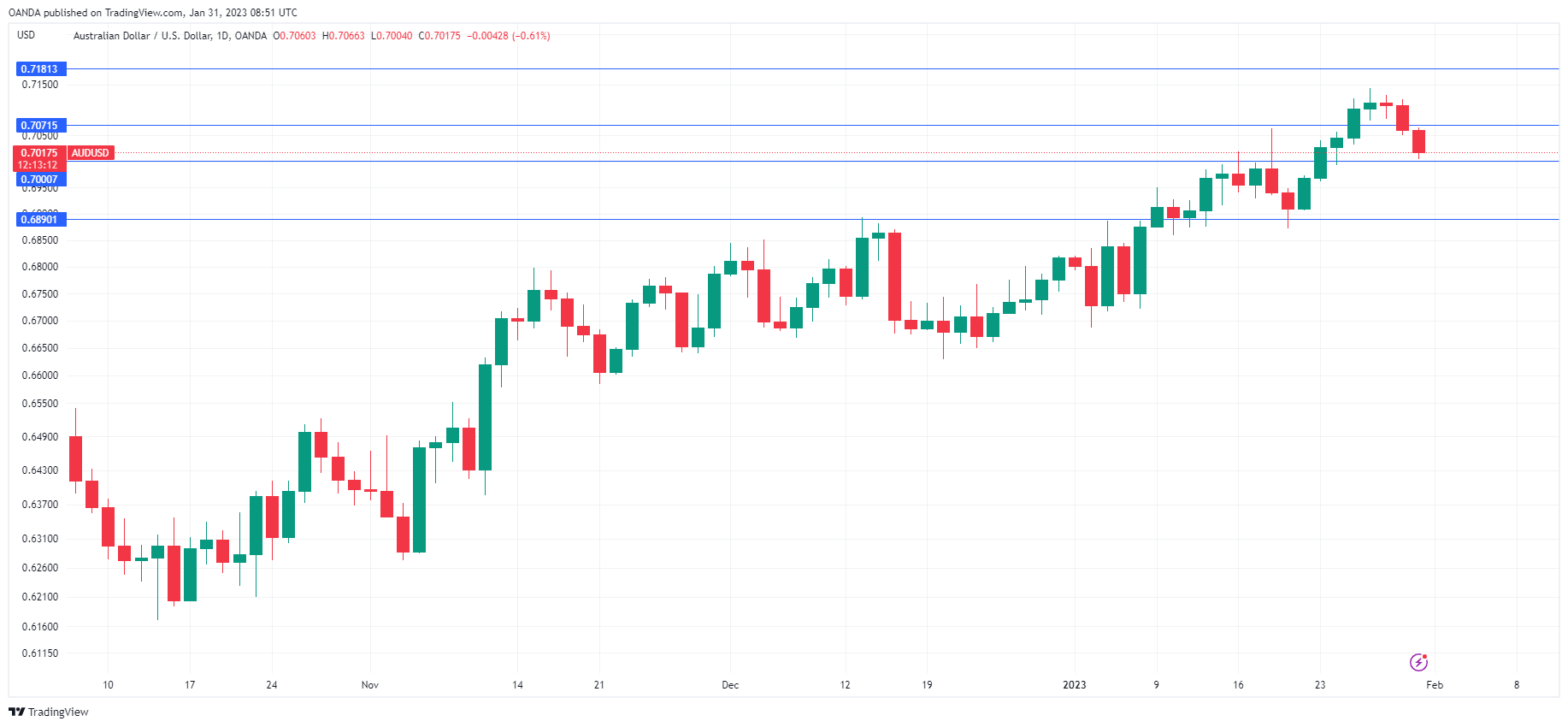It has been a rough start to the week for the Australian dollar. AUD/USD dropped 0.68% on Tuesday and is down 1.36% on the week. In the European session, the Australian dollar is trading just above the 0.70 line.
Australia’s retail sales sink
Retail sales for December were dismal, with a reading of -3.9% m/m, compared to the consensus of -0.3%. This was down from the 1.7% gain in November and marks the third decline in four months. It was the first decline in 2022, and the Australian dollar has responded with sharp losses. The silver lining is that retail sales are traditionally weak in December. The strong November read showed that consumers did their Christmas shopping early to take advantage of Black Friday discounts.
The sharp drop in consumer spending is another sign that cost of living pressures are taking a toll on consumers. Strong consumer spending has enabled the Reserve Bank of Australia to continue raising rates to tame inflation. The RBA will not be pleased with the latest retail sales data, but it is still expected to go ahead next week with a modest 25-basis point increase. The cash rate is currently at 3.10%, and the markets estimate that the peak rate will rise to somewhere between 3.6%-3.85%. This means that more hikes are on the way after February, but the pace of the rates will be data-dependent, especially on inflation reports.
The Federal Reserve concludes its 2-day meeting on Wednesday, and a 25-bp increase is priced at close to 100%. This doesn’t preclude volatility in the currency markets, as a hawkish stance from the Fed, either in the rate statement or in comments from Jerome Powell, could provide a boost to the US dollar. The markets continue to talk about a rate cut late in the year due to the weakening US economy, but the markets could be in for a nasty surprise if the Fed reiterates that high rates are here to stay and there are no plans to cut rates.
AUD/USD Technical
- AUD/USD is putting pressure on support at 0.7000. The next support line is 0.6890
- 0.7071 and 0.7181 are the next resistance lines
